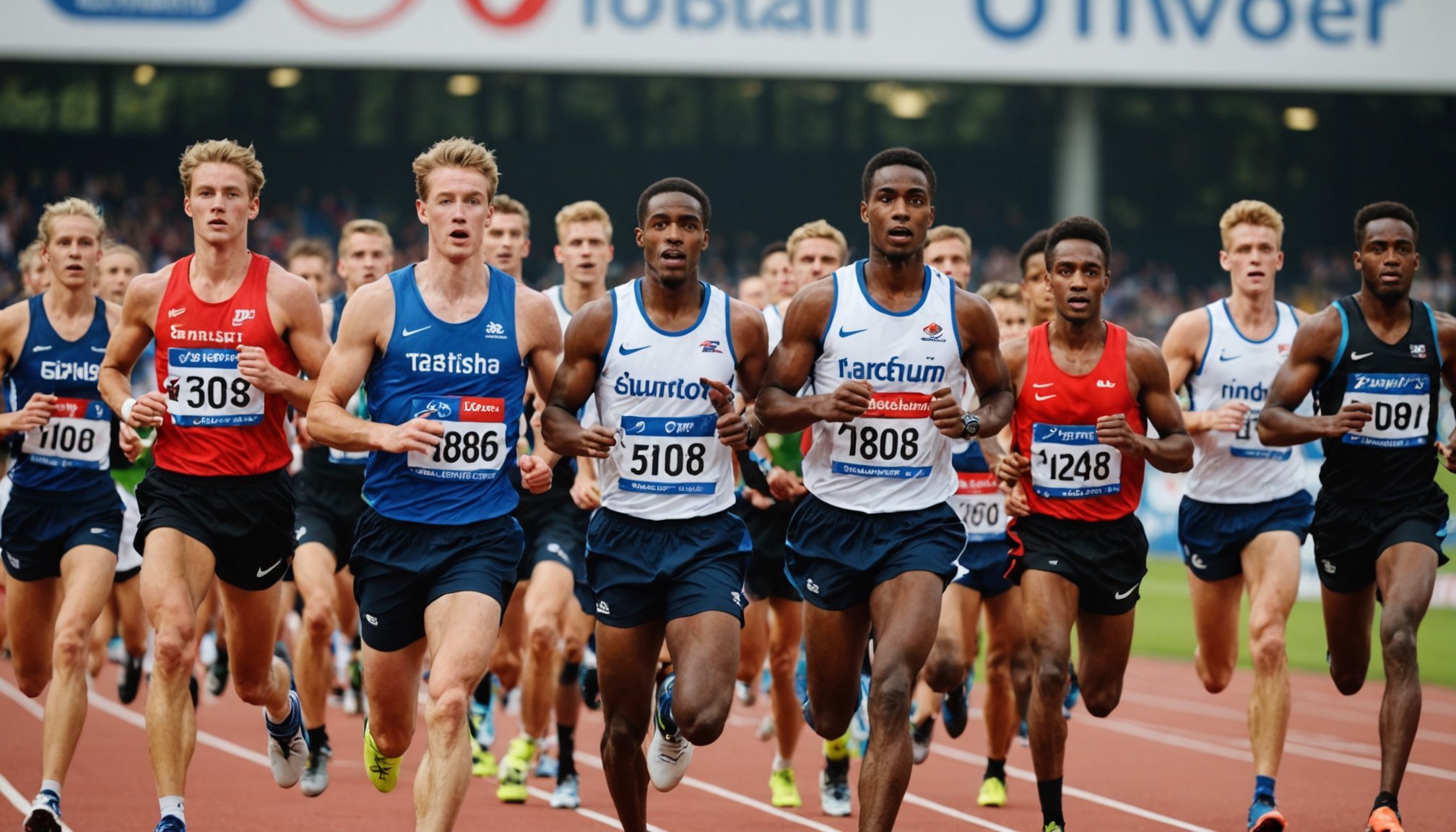Understanding the Role of Social Media in Sponsorships
In the evolving landscape of sports, social media serves as a critical tool for increasing visibility, particularly for amateur athletes seeking sponsorship opportunities. The ability to interact directly with an audience offers a unique platform for athletes to showcase their talents, personality, and achievements in real-time.
Sponsors increasingly evaluate an athlete’s social media presence as a measure of their marketability. Sponsors look for engagement metrics such as likes, shares, and comments as indicators of an athlete’s influence and reach. An engaged audience signals potential for greater exposure, adding value to the sponsor’s investment.
Also to discover : Unveiling the hurdles: exploring the barriers confronting female athletes in uk sports
Moreover, the level of social media engagement can significantly impact sponsorship prospects. High engagement reveals an athlete’s connection with their audience, which can translate into consumer loyalty and brand enthusiasm. This can lead to more lucrative sponsorship opportunities, as brands commonly prefer athletes with active and engaged followings.
Understanding and leveraging social media to cultivate an engaging online persona can prove pivotal for athletes aiming to attract and retain sponsorships. This ongoing relationship with followers not only elevates visibility but also enhances long-term career growth in sports marketing.
Additional reading : Building Mental Toughness: The Comprehensive Handbook for Coaching Young Athletes in Sports Academies
Building a Personal Brand on Social Media
Personal branding is pivotal for athletes aiming to stand out and attract sponsors. Identifying your unique selling points can make your athlete profile more engaging. It involves reflecting on your skills, personality, and achievements that set you apart. This self-awareness is crucial for developing a resonant brand.
To craft an authentic online image, authenticity is key. Share genuine stories and insights about your training and personal life. This transparency fosters trust and strengthens connection with your audience. Engaged followers tend to be more supportive and interested in your journey, enhancing your visibility to sponsors.
Showcasing achievements isn’t just about listing accolades. It’s about highlighting the journey and effort behind each success. Visuals play a significant role; use captivating images and videos to narrate these stories dynamically. Incorporate call-to-actions to motivate audience interaction, driving further audience engagement.
By blending personal narratives with professional milestones, athletes can create a holistic brand that appeals to sponsors. A well-rounded online presence increases your reach and enriches interactions, making you a more attractive prospect for sponsorship opportunities.
Choosing the Right Social Media Platforms
In navigating the sea of social media platforms, aligning your choice with your audience reach and engagement metrics is crucial for athletes aiming for sponsorship opportunities.
Overview of Popular Platforms
Different platforms suit different content types, playing a vital role in an athlete’s digital strategy. Instagram excels in visual storytelling, offering tools like reels and stories that showcase your talents compellingly. Twitter, on the other hand, serves up quick, real-time engagement, perfect for updates and fan interaction. TikTok is gaining traction for reaching younger audiences with shareable, dynamic content segments.
Assessing Demographics of Each Platform
Understanding the demographics of each platform is essential. Instagram and TikTok consistently engage younger demographics, while Facebook attracts an older audience. Knowing where your target audience spends their time helps in tailoring content, ultimately enhancing interaction.
Aligning Platform Choice with Sponsorship Goals
Align your platform selection with your sponsorship goals. If you’re targeting brands valuing visual impact, Instagram should be priority. For those focusing on broad reach and interactive discussions, Twitter can be the primary focus. Plan with purpose, ensuring your chosen platforms amplify your unique athlete profile.
Creating Engaging Content
For athletes aspiring to enhance their sponsorship appeal, producing effective content creation is crucial. To resonate with your audience, consider the type of content that garners significant interaction—such as behind-the-scenes glimpses and training sessions. These insights into your routine offer an authentic connection point for followers.
Boosting audience interaction is key; engaging content should invite comments, likes, and shares. Prompting discussions and posing questions encourage followers to partake in conversations and helps enhance visibility.
Achieving balance between promotional content and storytelling is beneficial. Regularly integrating personal anecdotes alongside sponsored posts can keep content fresh and genuine, avoiding saturation with overt advertising. This approach maintains an authentic representation of your athlete journey.
Tips for enticing engagement include using vivid visuals, crafting interactive polls, and running giveaways. These strategies not only capture attention but also entice further involvement from your audience. When athletes skilfully blend relatable content with promotion, they engage followers while still upholding their unique profiles. With creativity and consideration, your social media can become a dynamic platform for building a robust presence and drawing the attention of potential sponsors.
Utilizing Analytics to Measure Impact
Understanding social media analytics is essential for athletes striving to enhance their sponsorship opportunities. Key metrics such as engagement rates, follower growth, and impressions provide valuable insights into content performance. By consistently tracking these metrics, amateur athletes can discern what resonates with their audience, allowing them to craft more impactful content.
Performance tracking involves analysing data to identify trends and measure success. For example, measuring the increase in likes and shares after posting can indicate the content’s effectiveness. Regular monitoring helps athletes adapt their strategies to maintain and grow their reach.
Using these audience insights, athletes can better tailor their content strategy. This data-driven approach allows them to make informed decisions, such as posting during peak times or focusing on popular content themes. Moreover, incorporating audience feedback helps refine their approach and boosts engagement.
Adapting content based on analytics not only enhances audience interaction but can also attract more sponsors. By demonstrating a solid understanding of their audience’s preferences, athletes position themselves as attractive partners for brands looking to connect with a targeted and engaged audience.
Networking and Collaboration Strategies
Networking and establishing partnerships are essential for athletes seeking sponsorship opportunities. Building relationships with both brands and fellow athletes expands an athlete’s visibility, creating a wider platform to showcase their talents and engage with potential sponsors.
Collaboration is a powerful tool for increasing exposure. By partnering with others for joint content creation, athletes can tap into new audiences and enhance their social media presence. Whether co-hosting live sessions or participating in shared challenges, collaborations offer mutual benefits in visibility and reach.
Events and competitions also play a crucial role in networking. Participating provides athletes with opportunities to connect with brand representatives, influential industry figures, and like-minded peers. Networking at such events can lead to valuable introductions and potential partnerships that might not be possible solely through online channels.
Being proactive in fostering partnerships underscores the importance of not just numbers but genuine connections. As athletes build a network of supportive peers and allies, they increase their chances of securing sponsorships. With a strategic blend of networking and collaboration, athletes can position themselves as dynamic, marketable individuals in the ever-evolving sports landscape.
Avoiding Common Pitfalls in Social Media Sponsorship
Navigating the world of social media sponsorship demands careful attention to brand alignment. Missteps can deter potential sponsorship opportunities, particularly for amateur athletes aspiring to intensify their reach in the sports domain. Athletes must ensure their personal brand resonates with prospective sponsors, maintaining consistency with the brand’s values and image.
Common mistakes athletes often make include not fully understanding sponsor expectations, mismatched platforms, and neglecting audience engagement. Debilitating to sponsorship opportunities, these oversights may lead to diminished visibility and trust. Athletes should consciously align posts with their targeted sponsor’s ethos, avoiding controversies or content misaligned with the sponsor’s image.
Managing online reputation is crucial in enhancing sponsorship prospects. Proactively monitoring social media activity helps athletes respond swiftly to potential reputational risks, ensuring a clean and attractive profile. Methods such as regular content audits and engaging positively with followers can fortify one’s online presence.
Brand alignment and reputation management are pivotal in securing and maintaining sponsorships. By avoiding common pitfalls and nurturing an authentic online presence, athletes can position themselves more advantageously in the field of sports sponsorship.
Case Studies of Successful UK Amateur Athletes
Exploring case studies offers valuable insights into effective strategies for turning social media engagement into sponsorship opportunities. Highlighting how UK amateur athletes have parlayed their online presence into tangible success stories, these examples illustrate the transformative power of digital platforms.
Profiles of Notable Athletes
Athletes like sprinter Adam Gemili have skilfully crafted a unique athlete profile, using social media platforms to engage audiences with their journey. He tailored his content for platforms like Instagram and Twitter to show not just training regimes but personal milestones.
Key Strategies Employed
A strategic use of Instagram for visual storytelling, showcasing training highlights and personal branding, has been pivotal. Gemili focused on strong visuals and authentic narratives, effectively blending his professional aspirations with personal stories to keep the audience engaged.
Outcomes from Effective Social Media Use
Gemili’s effective use of social media led to notable sponsorships from brands appreciating his online influence. His case exemplifies how audience engagement and maintaining a consistent brand message directly correlate with increased sponsorship interest, heightening the appeal for potential partners.








